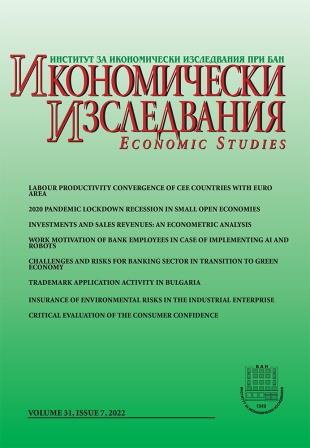Labour Productivity Convergence of CEE Countries with the Euro Area – Evidence at Aggregate and Sectoral Level
Labour Productivity Convergence of CEE Countries with the Euro Area – Evidence at Aggregate and Sectoral Level
Author(s): Kristina StefanovaSubject(s): Economy, Supranational / Global Economy
Published by: Институт за икономически изследвания при Българска академия на науките
Keywords: Labour productivity convergence; Beta and Sigma convergence; countries from Central and Eastern Europe; Euro area; Panel regression model
Summary/Abstract: The paper aims to verify the existence of labour productivity convergence of Central and Eastern European (CEE) countries with the euro area over the period 2000-2020 at aggregate and sectoral levels. For this purpose, the study uses the beta and sigma convergence methods. The application of the ordinary least squares fixed effects panel regression proves the existence of beta convergence of the countries of Central and Eastern Europe with the euro area at both aggregate and sectoral levels. Stronger convergence is observed in the agriculture, forestry and fishing sector and in the industry sector (including construction) than at aggregate level. The weakest convergence is observed in the services sector. The results of the linear trend model of the coefficient of variation for the σ-coefficient confirm the hypothesis of sigma convergence between the average level of labour productivity of the countries of Central and Eastern Europe and the average of the euro area at aggregate and sectoral levels. At the same time, the differences in the degree of convergence between the three sectors resulting from the application of beta convergence are confirmed. The comparison according to the degree of sigma convergence with the euro area in the different countries of Central and Eastern Europe shows stronger convergence in the countries that have adopted the euro than in the countries outside the euro area, which is considered to be a consequence of the Europeanisation effect.
Journal: Икономически изследвания
- Issue Year: 2022
- Issue No: 7
- Page Range: 3-19
- Page Count: 17
- Language: English

